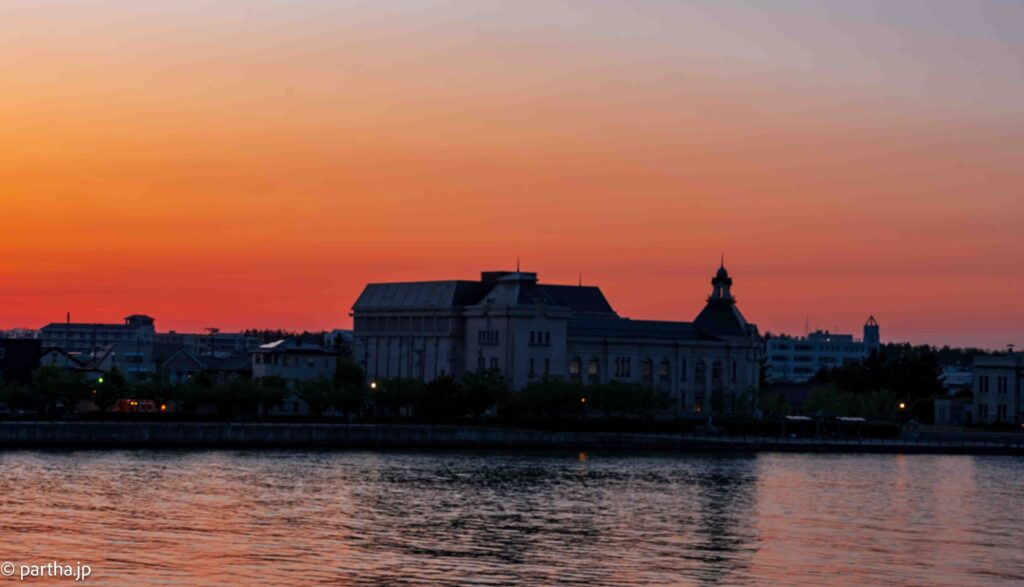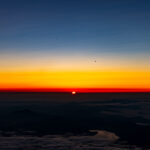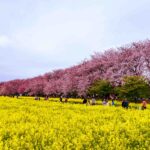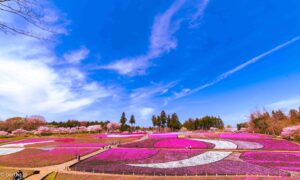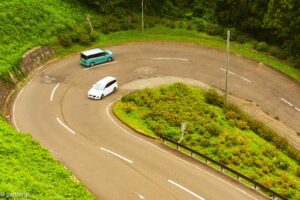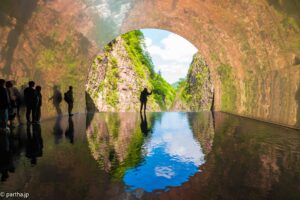
Niigata prefecture is located on the west coast of Japan, falling in the Chubu or Central Region of the main island. Niigata’s claim to fame is the rice grown in the region, considered to be the most delicious, the other claim to fame is the rice wine with an extraordinary number of breweries located in the prefecture.
The prefecture is also known for it’s beautiful coastline and mountains. Ski resorts abound in the Echigo region. The region stretches around 300 kilometres along the coast of Japan and sparsely populated. A drive through the prefecture crosses a multitude of photogenic spots with parking areas for those who want to stop and capture the landscape.
We planned a visit during the Golden Week holidays, stretching over the first week of May. Driving during these holidays carries the risk of being stuck for hours in traffic, hundreds of thousands of people with similar holiday plans.
We skipped the first day of the holiday and decided to travel in the middle of the week and were rewarded with reasonable traffic heading out of Tokyo. The traffic, not sparse, moved smoothly, there were no crashes on the roads to choke up space and with stops at two service areas were entered Niigata prefecture.
We exited at the Yuzawa Interchange and a 25 minute drive on mountain roads bought us to the entry point of the Kiyotsu Gorge.
The plan was to visit the Kiyotsu Gorge on the way, the light tunnel being a photogenic spot shown across travel guides. As we were in the middle of Golden Week holidays, a prior reservation was required and security guards checked whether we had a reservation before allowing us into the area.
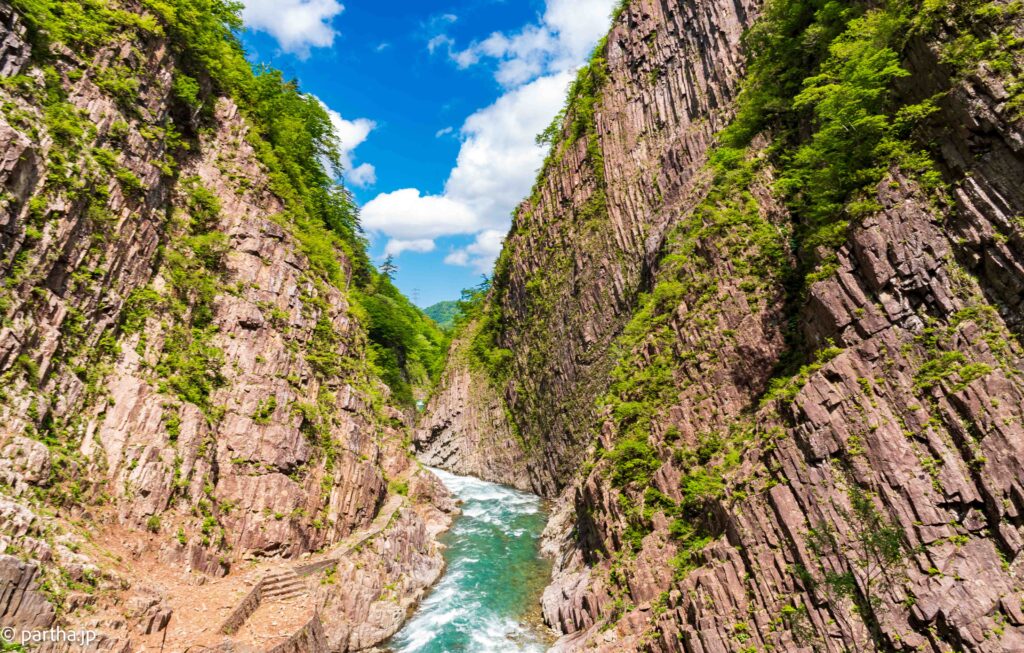
The Kiyotsu Gorge falls under the Tokachimachi city in the prefecture and towering cliffs along the Kiyotsu river with clear blue waters along with its panoramic views makes the place a must stop on the way to Niigata.
We reached relatively early in the morning and the parking along the Kiyotsu river had plenty of spaces left. We parked and walked up mountain to the entrance of the gorge.
There is a tunnel that runs around 750 metres in the gorge , there are four viewing spots with the epoch being a reflecting opening where the water collects into a shallow pool and reflects the person standing at the opening.
People lined up politely and patiently, people took pictures, lingered for a few minutes and if they wanted more time went back to the tail of the queue, lining up again for pictures.
The tunnel has futuristic designs , a firm called MAD architects renovated it in 2018 and according to their descriptions ‘’ The tunnel draws on the five elements of nature Wood, Earth, Metal, Fire and Water, MAD’s(architects) scheme transforms points along the historic tunnel through the realisation of several architectural spaces and artistic atmospheres. The designs rethink the relationship between humans and nature and seeks to connect locals and visitors alike with the majestic beauty of the land’’.
The description lives up to the tunnel design and the futuristic space at the edge of a raging river creates a paradox of the artificial and the real.
Since we were traveling in the Golden Week, tickets had to be purchased in advance and the Asoview website(www.asoview.com) are the official vendors for this attraction. We had our tickets on the cellphones and a scan at the entrance of the tunnel and we were in.
The first platofrm of the tunnel the visitor encounters is called The Passageway and it contains five different coloured lights that flash with an accompaniment of chanting music. This part of the exhibit is called ‘Expression of Colour’.
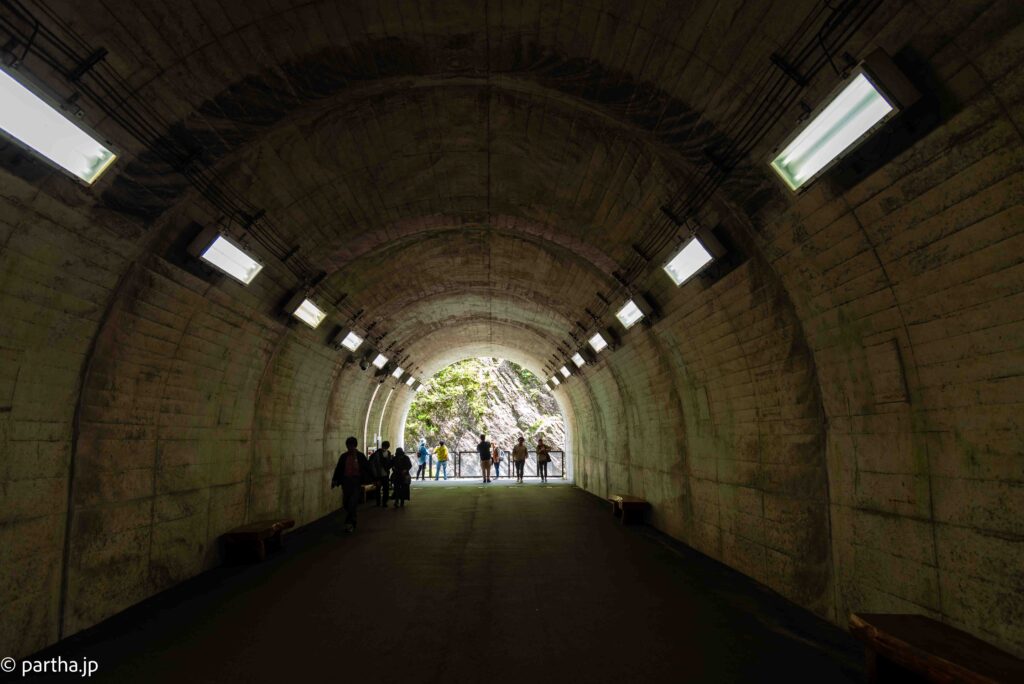
The next platform is called Flow and the walls of the tunnel are painted in Zebra like stripes of black and white. There is an installation called ‘Invisible Bubble’ at the centre of this installation and it is an actual toilet. MAD Architects have turned a toilet into an art installation.
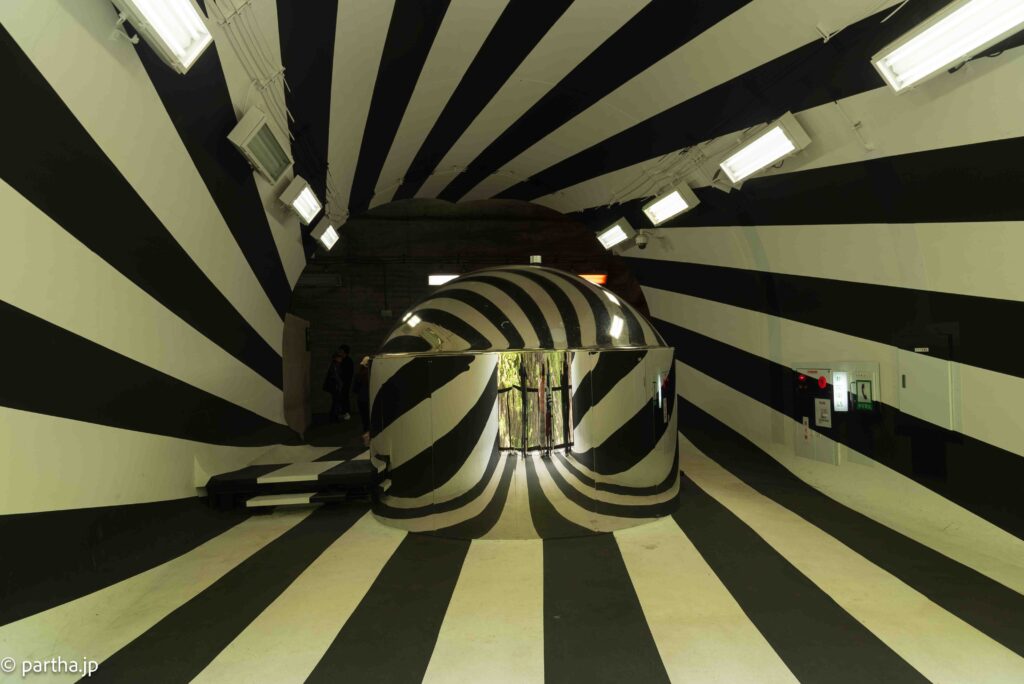
The third platform is called ‘Drops’ with mirrors in the shape of droplets on the tunnel ceiling. The walls are lit up by an orange glow and the dim lights and droplet like mirrors gives an eerie feeling to the visitor.
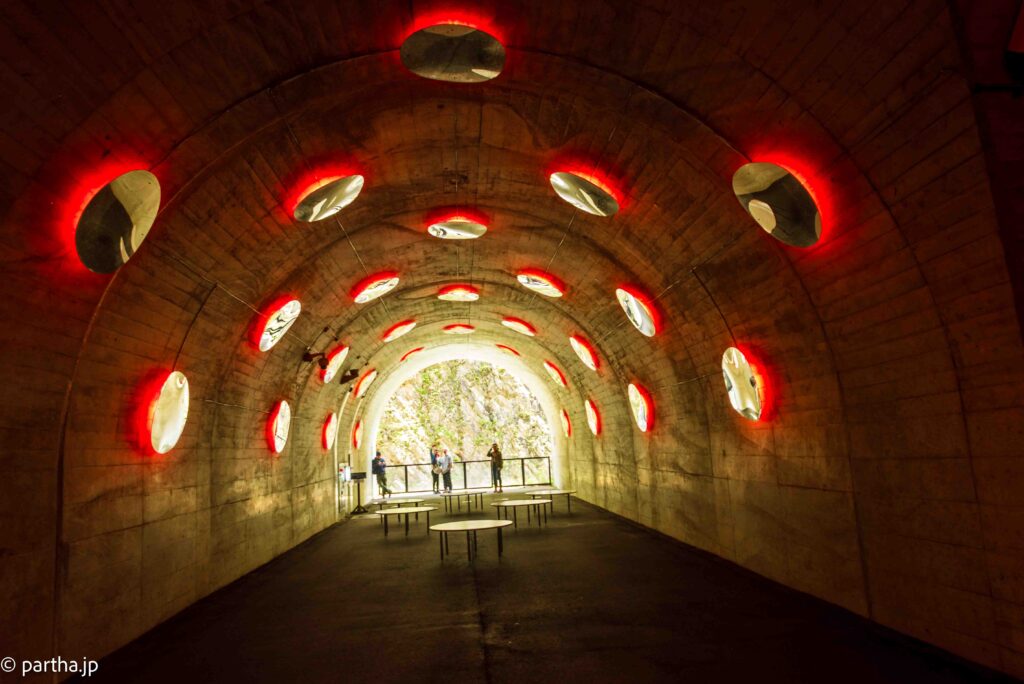
The tunnel was crowded due to the Golden Week visitors and the eerie feeling doesn’t get transformed into a scary one by the sheer presence of hordes of people.
The last section and the highlight is called the ‘Panorama Station’ The floor of this part of the tunnel has a shallow pool of water that provides a reflection of the silhouette of the person standing near the opening and provides fabulous pictures with the greenery reflected behind the silhouette.
There are a few cafes and restaurants outside the tunnel and we decided to buy some freshly made Onigiri(Rice balls) from a food stand for our lunch. The food stand person handed out tokens after we paid for the order and as we waited made the Onigiris for us.
There is a structure called Periscope which features a souvenir shop and a restaurant. There is a foot bath for tired legs, though the 750 long tunnel wasn’t tiring enough to indulge in it. The ceiling of the Periscope has mirrors which reflect the surrounding and the lush summer greenery makes it a wonderful sight.
Our token was called and we collected our Onigiris and headed back to the car. Our final destination for the night for Niigata city which was another 3 hours drive away from the Kiyotsu Gorge.
We arrived in Niigata by early afternoon and after a check-in at the hotel went out for a walk to the Niigata Ferry Terminal. We had tickets booked for the Sado Island Ferry the next morning at 06:00 and wanted to check the boarding spot and ticket purchase terminals. The person at the ticket counter, surprised at seeing foreigners speaking Japanese, confirmed that we could come to the terminal by 5:30 and get the tickets from the counter.
Sadoshima 佐渡 Where time stops
We arrived at the Ferry Terminal at around 4:45 in the morning and it was already bustling. Tourists, school-kids heading for some sports event and I assume local residents lined up. The large hall was divided into boarding groups, the ones who arrived early at the front and new lines forming at the back.
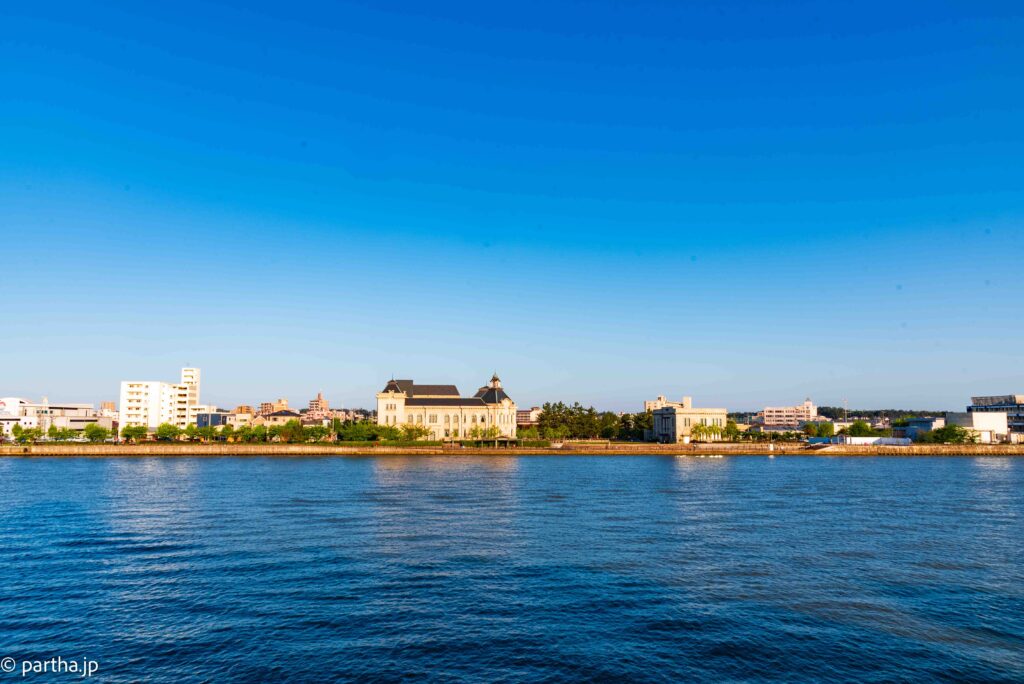
Travellers have the option of choosing between the Car Ferry(cheaper and slower) or the Jet Foil(Expensive and Faster). We had chosen the cheaper option with the 2nd Class cabins.
Boarding started at 5:30 and the ones in front had a choice of seating in the 2nd class seating area. Late Spring and the early morning hour made the air chilly and outside seating was not a comfortable option. So we decided on sitting inside the cabin with brief outside excursions to capture the Sunrise and the sea. There were chairs, there was seating on the floor and for those who paid for first class comfortable cabins.
The Car Ferry also transports cars and motorcycles, the cost of a return car ferry ticket is around $400 per person, so we decided against it, the normal ride costs around $50 per person for a return journey. Like most things in Japan the process of loading the cars is highly organised with staff guiding the drivers through the process of loading and unloading the cars.
The journey takes around 2.5 hours, the sea can be rough at times, however there is ample space for movement on the ferry and the passengers roamed around the decks, playing games in a games arcade, eating curry, ramen and other fast food at the restaurant.
We landed in Sadoshima around 8:30 and with an orderly debarking were ready to explore the island. There is a tourist information Centre on the 2nd floor of the terminal building and the staff was helpful in helping us purchase an all day pass for the bus on the island.
However the staff didn’t explain to us and we discovered on our own that the buses are not regular and do not cover all the tourist spots. The service that runs most frequently is on the Ferry Terminal to Sado Gold Mine route. The service on the other routes is sporadic and it is not possible to cover all the spots and even most of tourist spots by bus.
The best option is to rent a car and drive along the roads with sparse traffic even on a holiday. There are bicycle rentals including electric bikes which might be convenient to an extent but are definitely not enough to cover the island on a single day.
Our first stop and eventually our only excursion was to the Sado Gold Mine. The bus journey, around 90 minutes from the terminal, the bus catering to the residents of the islands and taking the visitor through residential streets before finally arriving at the mines.
The Sado Gold Mines were known for using manual means for Gold extraction, ironical considering how far Japan would advance in technology over the last century. The Sado Gold Mines were one of the largest producers of Gold in the 17th century.
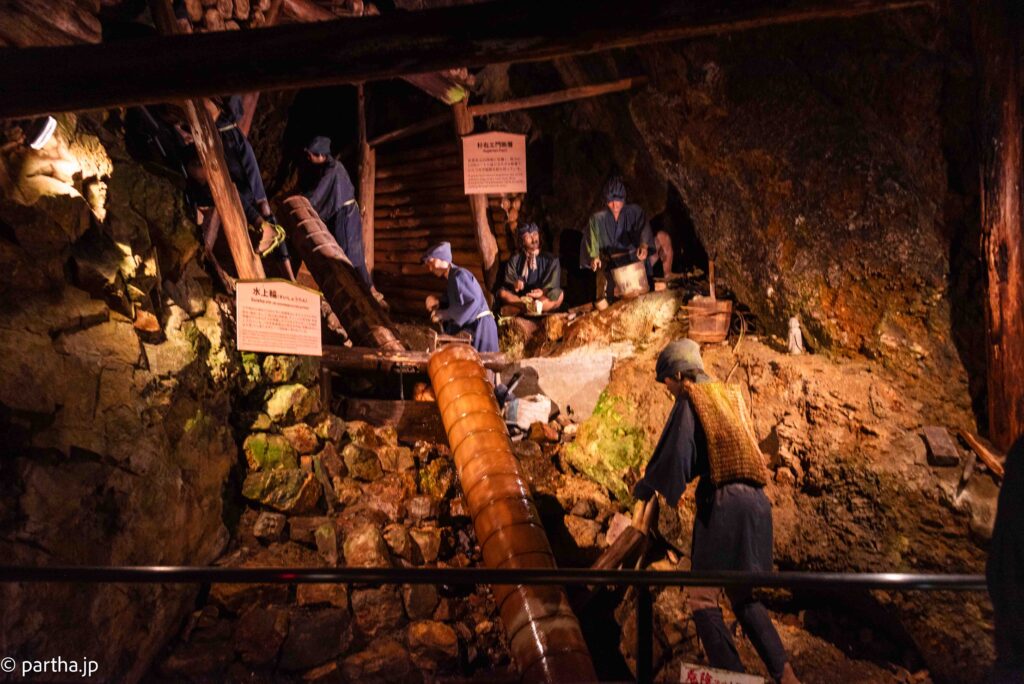
There are 2 options for the tour and we chose the Sohdayu Mine 30 minute one, unaware of the limitations of bus tours on the island.The visitors are taken to different parts of the mine with mannequins of miners at various spots depicting the life of the miners in a bygone era.
The life of the miners was uncomfortable and short, most of them dying of lung diseases that come from working long hours underground. However the miners apparently were paid well and also well respected. Various depictions of the hierarchy of the miners, the organisations that they worked for were depicted and the impression is one of an orderly work environment even though the work wold eventually kill most of the miners.
A few months after we visited the Gold Mines, they were inscribed in the Wrold Heritage List by UNESCO.
Once we finished the mine tour we looked for the Kitazawa Floatation Plant, pictures of which are part of most tour guides to the Sado Island. Enquiring at the ticket counter of the Gold Mine Tour, we were told that it was around 30 minutes walk from the mines.
The walk was downhill, the pedestrian path narrow, so we looked out for cars and we walked down to the plant. There are signs along the road pointing to the plant but the last part as confusing and it took a few wrong turns before we made it to the entrance of the plant.
The plant is known as an industrial heritage site and was set up in the early 1900. ‘A floatation plant is where the final stage of Gold Extraction takes place. More precisely it’s where valuable minerals that get extracted from the mine are separated from all the other things that get dug out, waste materials and othe byproducts’.
The floatation plant went out of use in the 1950s and nature started reclaiming the plant. Today most of the structure is overgrown with plants and vines providing the visitor with an eerie yet photogenic opportunity.
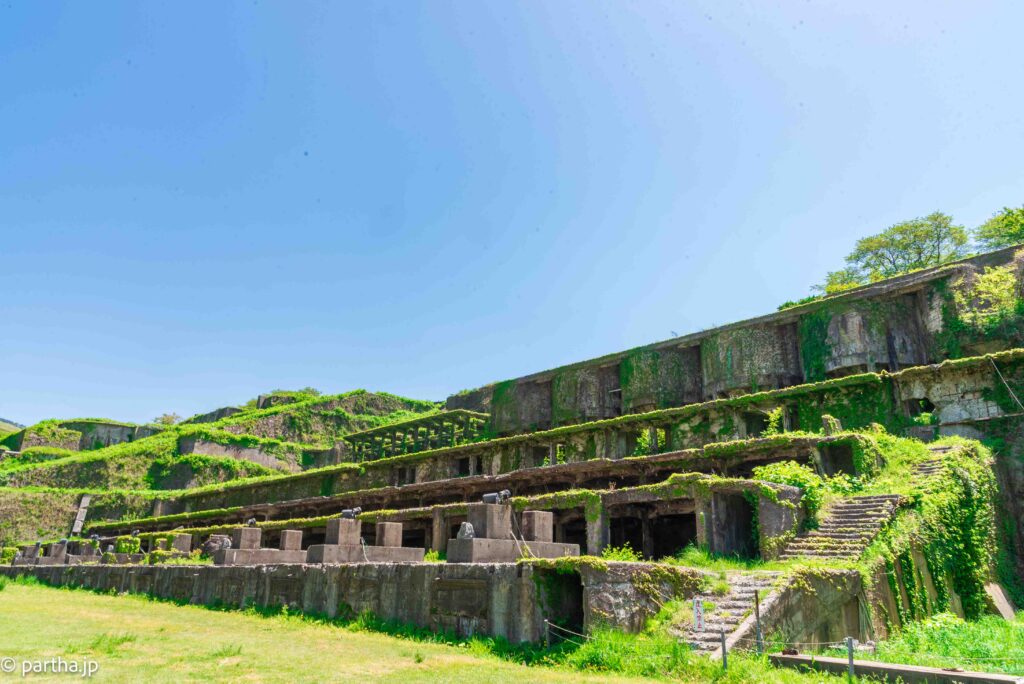
A stylish cafe called Kitazawa Terrace at the site serves food and beverages and the outdoor seating was ideal for the late spring day. The cafe offers views of the floatation plant from the inside and there is outside seating under large umbrellas. The menu has local delicacies including a few items that are produced locally.
Once we exited the cage we realised the problems in commuting to other tourist spots. Buses to the ferry terminal run at hourly intervals and the option at mid day was to wait for a bus or take a chance on the next passing bus. We did exactly that and got dropped at another bus station which was right in the middle of nowhere. So we walked around the coast close to the bus station and waited for the next bus to the ferry terminal.
The bus came after an hour and another hour’s ride took us back to the ferry terminal with not enough time to visit another tourist spot. The tug boat was at the top of our list , even though there was a bus heading there in a few hours there was nothing heading back. So we decided to catch the next ferry back to Niigata rather than meander aimlessly around the town.
A car is a must to get around the island especially if you are here on a day trip with limited time in hand. The local buses are scarce and the ones that run take their time. The island has an old world feel to it, it gives the impression of Japan that stopped changing half a century ago.
Sadoshima came into limelight as it was where Hitomi Soga and her mother were abducted by N.Korean agents and taken away by boat. The relative remoteness of the islands gives it a mysterious aura and for someone who comes from the bustling Tokyo metropolis, it provides a unique experience.
There are a lot of activities that can be done on the island, but time and transportation is key.
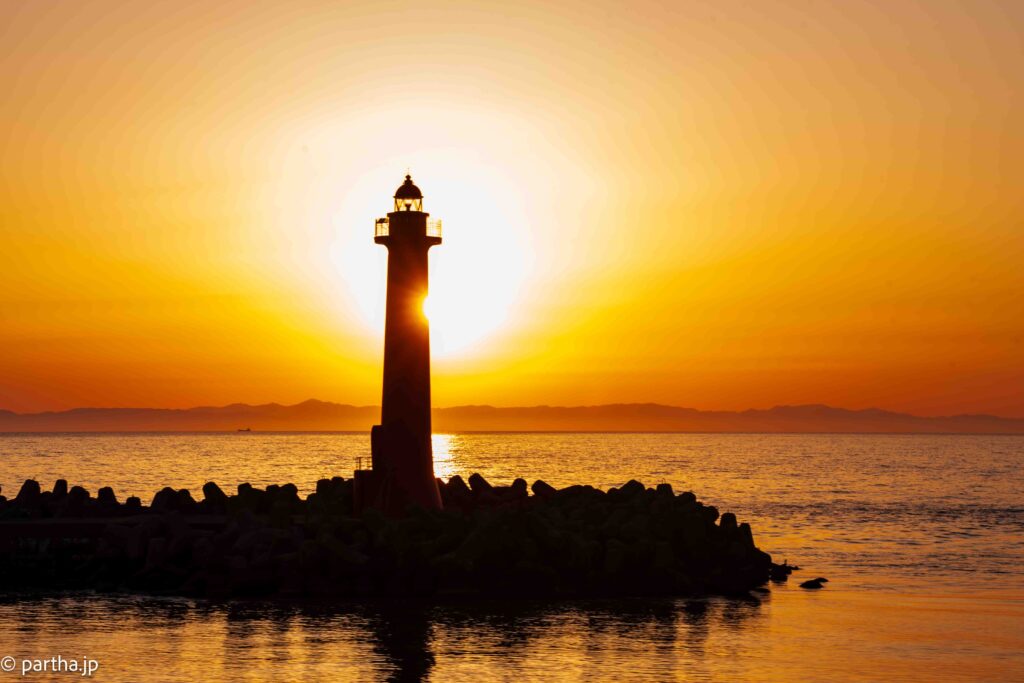
Sasagawa Nagare 笹川流れThe top of Niigata
On our 3rd day in Niigata we planned a trip to the end of the prefecture towards the north. Sasagawa Nagare has been promoted as a spot with views of rugged cliffs and eyecatching rock formations.
Sasagawa Nagare is a 11 kilometre stretch of coastline with jagged rocks, craggy cliffs, small rocky islands above the waterline.
The drive from Niigata city takes one along the Sea of Japan Tohoku expressway exiting at the Murakami Interchange, passing Murakami town and then another 30 kilotmetres till we reach Yuhaikan, a roadside stop with restaurants and souvenir shops. We were lucky to find parking, one of the advantages of arriving at the reasonably early morning hour.
The souvenir shops sells local specialities including Sake and Rice. Niigata is known for its delicious rice and Sake is the rice wine that is made from that ingredient. There is a cafe on the 1st floor and a restaurant on the 2nd floor of the shop. The restaurant connects to an over-bridge with a view of the sea. The name Yuhaikan suggest sunset views, though we came early in the morning and would not be waiting for the sunset.
The highlight of this place is a walking path along the sea, a viewing platform to catch sunset and a boat ride along the rocks. We walked up to the terminal at the Kuwagawa fishing port and there is sufficient parking for the tourists. We booked our ride one the next boat leaving in 30 minutes. There are a few shops and restaurants around the terminal selling local delicacies including seafood.
The boarding time came and we got on the boat with all of the early boarders moving to the right of the boat. We realised later that the right offered clear views of the rocks, the left side facing the coastline. One could go outside on the deck and try to take pictures if the people standing there moved enough to allow for it.
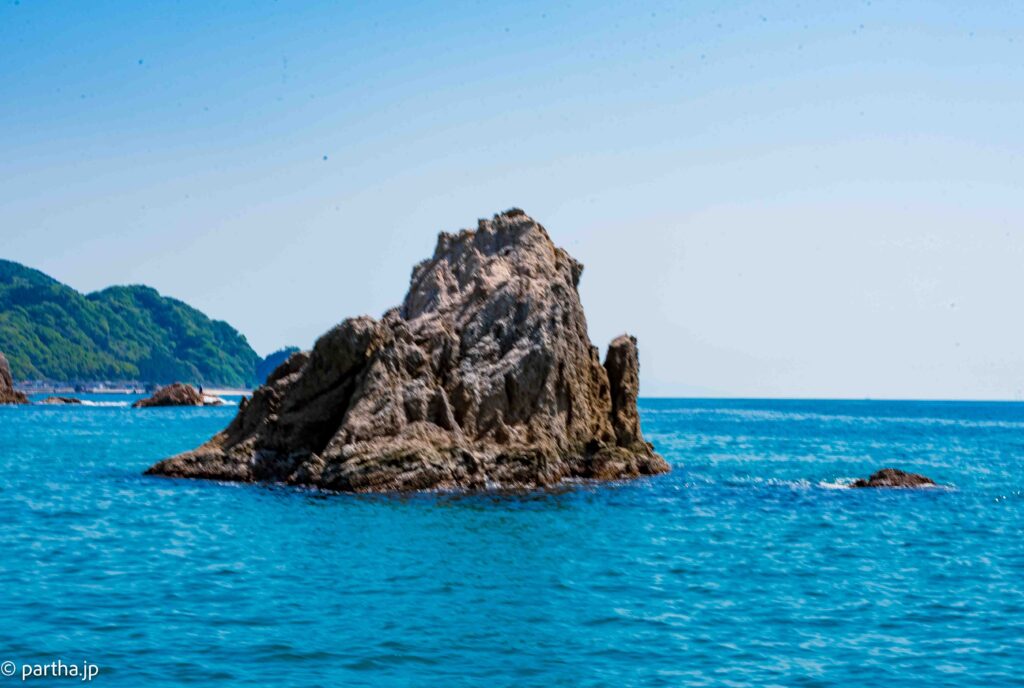
The 40 minutes boat ride offered views of the rock formations and views of the coastline with a pre-recorded commentary on the sights. The day was hot despite being the middle of the spring and the cruise interesting enough to make it worthwhile.
Seagulls followed our boat and children thew food at them. The seagulls occasionally caught the food and most of it landed in the sea. A few enterprising seagulls scooped the food, potato chips, crackers off the waters.
The area is relatively remote but the long holidays meant people were out and about, a few beaches on the coast were occupied by families and some of the families had whole beaches to themselves.
We walked back to the Yuhaikan for an ice cream and drove back to Niigata city. The traffic was still light but the parking now had a few cars waiting to get in. I imagine the lines would get longer through the day and the sunset is probably the highlight of the day for this spot.
The following morning as we drove into the nearby gas station to fill up, the lady attendant asked whether we were from Niigata. When I explained that we were from Tokyo and visiting during the holidays, she said ‘I hope you enjoyed your visit, please drive safely back to Tokyo’.
